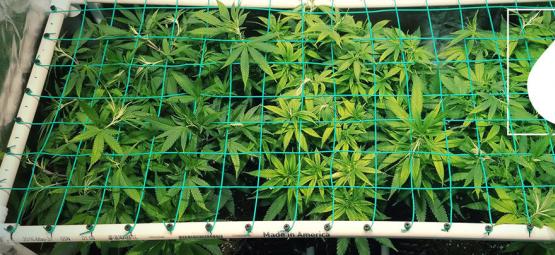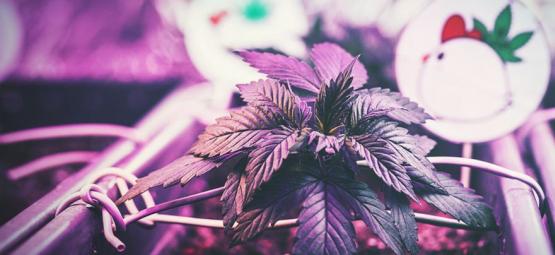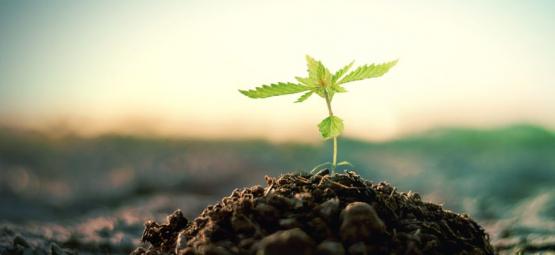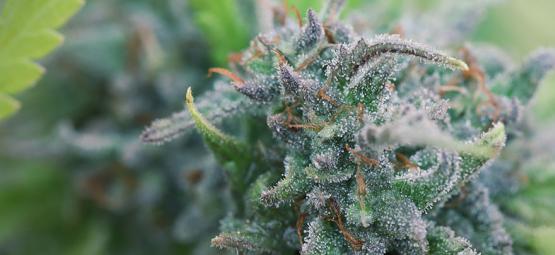How To Create And Maintain The Ultimate Cannabis Grow Space
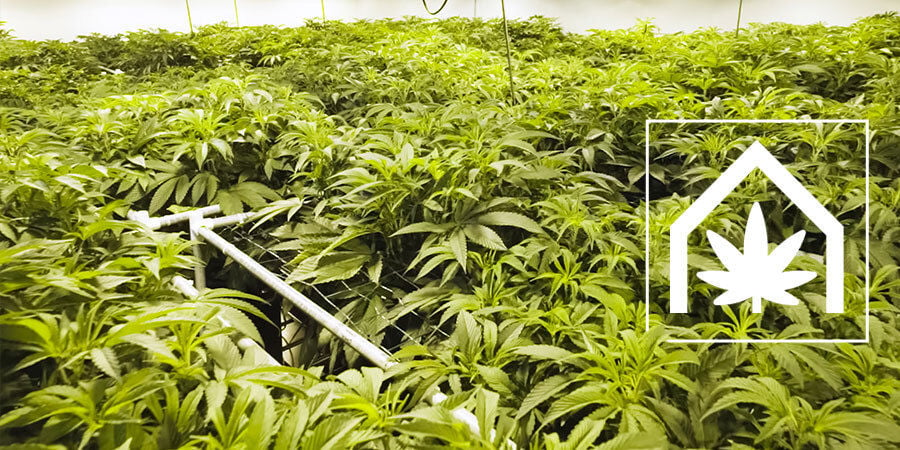
Starting your first cannabis grow, but don’t know where to begin? The good news is, with the appropriate planning and set-up, almost any grow space can produce great results.
Growing cannabis is a rewarding and challenging process. When done well, the rewards outweigh the effort. If done poorly, however, it can seem like a waste of time. Therefore, optimising your grow is essential to a good, satisfying result. You don’t need a warehouse to have a decent set-up, and you can get massive yields in just one square metre. It’s not the space that’s important, but how you use it.
This guide will cover:
- How to efficiently use the space available to you
- How to maintain a safe environment
- How to create and maintain a clean environment
- How to make your grow as environmentally friendly as possible
Maximise Your Cannabis Grow Space
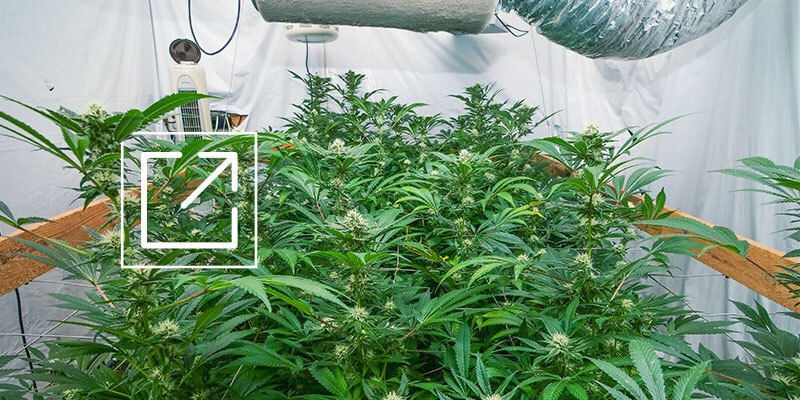
Most of us don’t have the luxury of a huge space in which to grow our crop. Therefore, we have to work with what we’re given, which can often be a very small place indeed. However, with the appropriate set-up and a little care and attention, huge yields are still possible in small spaces.
Use the Right Lights and Optimise Light Distribution
Traditionally, high-wattage HPS lighting is used in cannabis grows. These powerful, hot lights are great when the space is suitable, and almost unusable when it is not. Not only are they often too big to comfortably fit in, but they get too hot. At best, this will burn your crop; at worst, it can cause a fire.
Try using CFL or LED lighting instead. These smaller, cooler lights are much more versatile, and as such can fit into a variety of spaces. With inbuilt mirrors, they direct their light in a unidirectional way, making the power usage far more efficient. These are especially advised for grow spaces below one square metre.
Try Growing Vertically
Don’t have a lot of floor space? Try growing up. Most compact grows will have a lot more vertical space than horizontal space, and it’s worth using every centimetre of this to your advantage. Many modern grow tents facilitate vertical grows, and likewise many lights are long, thin, and have a 360 degree spread to light the whole space.
If keeping costs down is a concern, it is possible to build your own vertical grow space. Just ensure you make it strong enough to hold your mature plants. The last thing you want is to get to the flowering stage only to have the whole thing collapse in on itself!
Try the SOG or ScrOG Method
The sea of green (SOG) method is a win-win. Not only does it cram a huge amount of plants into a small space, but by maximising the amount of light that reaches each plant, it means that they will produce the highest possible yields per square metre.
For ScrOG, fewer plants are grown, but they’re trained to maximise their yield. By using a mesh screen, as the plants grow, they are trimmed and woven through the mesh to ensure maximum light uptake. Often, the lower leaves will be pruned, as these will not receive much light.
Grow Hydroponically or Aeroponically
Hydroponic and aeroponic grows come without the bulk of pots and their substrate. As the roots simply sit in water, or hang in the air absorbing a nutrient-rich mist, you save a huge amount of space.
The downside is that it can be very expensive to set up, and it is a more technical process, meaning you will need to be much more involved in your grow-op. Nonetheless, if you want great yields in little space, this may be the way to go.
Choose Containers That Most Efficiently Use the Available Space
It may seem simple, but choosing containers that are the best fit for your space could make all the difference. If you’re using round pots, the space between each will add up to a whole lot of empty—and therefore wasted—space.
Figure out the minimum size your pots need to be and go for them; any bigger and you’re just wasting space. Likewise, figure out your floor size and get pots that will fit together to best accommodate what you have available.
Choose a Suitably Compact Strain
Another simple but game-changing solution, this is perhaps one of the most important factors. Indoors, some strains can get up to 150cm, whereas others can grow to as little as 50cm. Obviously, if you have a small space, do your research and get a compact strain.
If you go for the right one, small size does not mean a smaller yield. Give your thanks to the hard-working breeders here, because they know how to fit a lot of bud onto a tiny plant.
Prevent Your Cannabis Plants From Stretching
If you’re not careful, your plants will stretch when they’re not supposed to. Although a surge in height during the early flowering phase is expected with most strains, you generally want to keep your plants from experiencing these growth spurts. If it is not managed properly, it can wreck your grow. By growing up to or beyond the light source, they will burn their top leaves and block light for the rest. If you get a yield at all, it will be thin and underwhelming.
Fortunately, there are a couple of simple things you can do to avoid this. First, ensure your lights are the correct distance from your plants at all times. Too far, and your plants will strive to reach them, and they will become unnecessarily tall. Likewise, although this is all about fitting a lot of plants into a small space, you must remember that each plant still needs adequate space. If they are too tight, they will block light from one another, and thus will grow aggressively in competition for the inadequate amount of light. Give them enough space!
If these steps fail, you can always top and trim your plants to keep them down. However, try to ensure you don’t get to this stage, if at all possible.
Keep Your Cannabis Grow Space As Safe as Possible
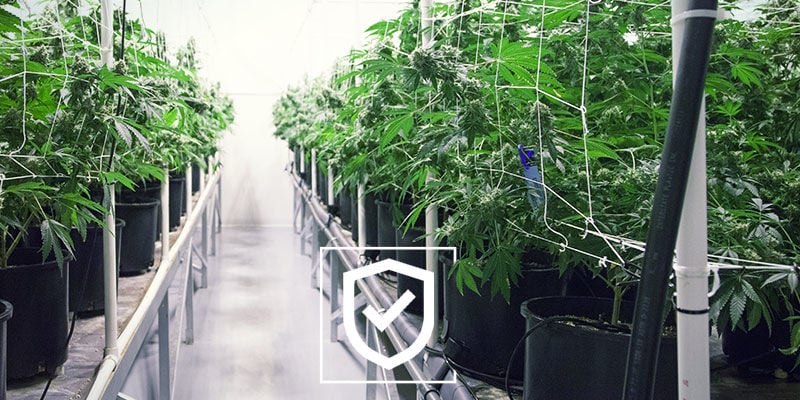
There’s a lot going on in grow spaces, and this can pose a number of safety risks. The greatest is fire. But there are other risks too. Some of the chemicals can be dangerous, the high levels of radiation can be bad for your eyes and skin, and the perfect conditions for growing cannabis are also a great breeding ground for mould, bacteria, and parasites. Remember, no grow is worth it if it ends up damaging your health.
1. Preventing Fire in the Grow Space
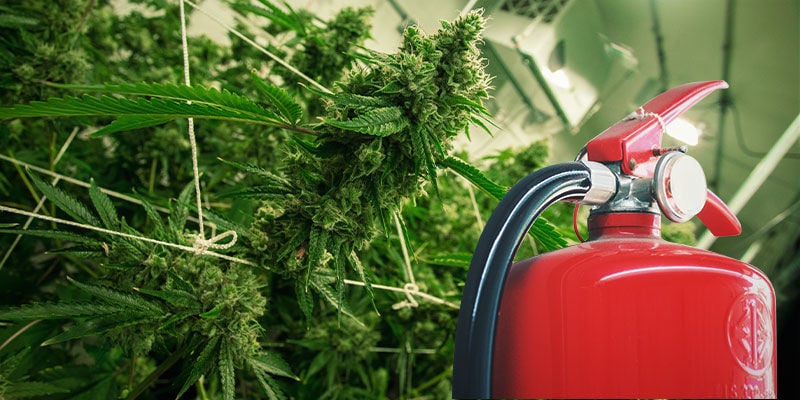
Considering you will have a large amount of power running into a small space and generating a large amount of heat—and this room is likely to contain a lot of water—the risks are fairly obvious. With due care and attention, though, the likelihood of a fire can be greatly reduced.
Wire Safely (Do Not Overload Circuits)
You’re likely to need a lot of power for your grow, but don’t run it all off a single plug through an ever-growing number of adapters joined up. Domestic power sources and cables are not designed to conduct industrial levels of energy, and can easily overheat if they are made to do this. So, invest in proper adapters with inbuilt circuit breakers, and do not overload them.
Keep Electrical Components Off the Floor
It’s worth raising all electrics off the floor, along with the wiring. By raising it off the floor, you can space it better, keeping it cooler in the process. It also means that spilling water onto this equipment is much less likely. As this can easily create a short-circuit and start a fire, it is imperative you prevent this from happening.
And, by keeping the floor clear, you mitigate the risk of tripping over and hurting yourself. Even if you think this is unlikely, imagine getting two months in and then tripping over and crushing your plants just as they begin flowering, bringing the whole tent and all the electrics down with you. Not worth the risk!
Check Equipment Regularly for Faults or Leaks
As grows are ongoing, the equipment used comes under a lot of duress. Even if you invest in good-quality growing equipment, things can still go wrong. Especially if you fixed up some elements yourself, it is worth regularly going over the components of your grow and checking that none are faulty. A split wire and leaking pipe are a terrible combination.
Buy and Instal a Ground Fault Circuit Interrupter
A ground fault circuit interrupter could save your life, and as such is a worthwhile investment. It serves a single purpose. It detects ground faults and breaks the circuit. Basically, if water gets into your circuit, a GFCI will break the circuit, stopping you from getting a potentially fatal electric shock.
Keep Water and Electricity Apart
This may seem obvious, but it cannot be stressed enough: keep electricity sources and water as far apart as possible. As a general rule, keep water below electricity.
One thing to watch out for; there will be high humidity in your grow room during certain stages (this is necessary), but this can cause dripping as water vapor condensates on the ceiling. This can be dangerous. As such, keep the humidity on the lower end of the ideal range if need be, and give the ceiling a wipe as necessary.
Maintain a Clear Environment
Keep combustible objects out of your grow space. All that should be in there is what is necessary. Nothing more!
Never leave rubbish lying about, and don’t keep a bin in there either. Every time you leave, take everything out with you except the bare essentials. Extra stuff means extra heat, which increases the likelihood of a fire. Besides, as your plants begin to grow, having as clear a space as possible is going to make your life much easier.
Keep Heat Sources and Objects Apart
Likewise, keep your lights as far away from things as possible. In a small space, this is going to be a challenge, which is why it’s advisable to go for a cooler type of light in the first place.
Think about an electricity source that is already working hard, and then subject this to a lot of external heat, and you can imagine what is going to happen. Use common sense, and, if necessary, move things about in your grow space to maintain a safe, cool environment.
Instal a Fire Door To Contain Any Fires
If a fire does break out, a fire-resistant door will be a (literal) life-saver. These things work wonders, and will contain a fire within a single room for an impressively long time. By investing in one of these, you give yourself and others in the building plenty of time to escape. What’s more, it gives the fire service more time to arrive and put the fire out before the whole building is destroyed.
Whatever your situation, do not resist calling the fire service if necessary. Being caught growing weed will never be as bad as failing to act against a fire!
Instal a Fire/Smoke Alarm
This may seem obvious, but it’s so simple and so effective. A fire alarm will pick up a fire while it is still small, and if you have a fire extinguisher to hand (which you should!), it could give you time to put it out and save the day. Even if it doesn’t, it gives you and others ample warning to leave the building. Ensure that you can hear the alarm from all parts of the building, even with the door closed, otherwise it is useless.
Do Not Use a Heat-Regulated Thermostat
A heat-regulated thermostat may seem like a simple solution to controlling the temperature in your grow space. Unfortunately, in the event of a fire, it can make things much worse. It will go into overdrive trying to draw air out of the room as the heat increases. The result? It will pull huge amounts of fresh oxygen into the grow space, massively fuelling the fire and making the situation much worse.
Have a Plan in Case of a Fire
Having a plan is easy and essential. First, make an exit plant. If a fire breaks out in your grow space, what areas of the building will that make inaccessible? If that happens, how will you get out? That is the most essential piece of information. Never have a grow space that could block your only exit!
Second, have a fire extinguisher to hand. Make sure it is not expired and in good condition. Also, make sure you have the correct type. As one of the most likely types of fire is going to be electrical, a CO₂ extinguisher will be the most useful. Also, keep a torch nearby. Hopefully, your equipment will work properly, and any fire will immediately cut electricity. As such, the space will be very dark and a torch will help you properly fight the fire.
2. Protecting Yourself From Bodily Harm
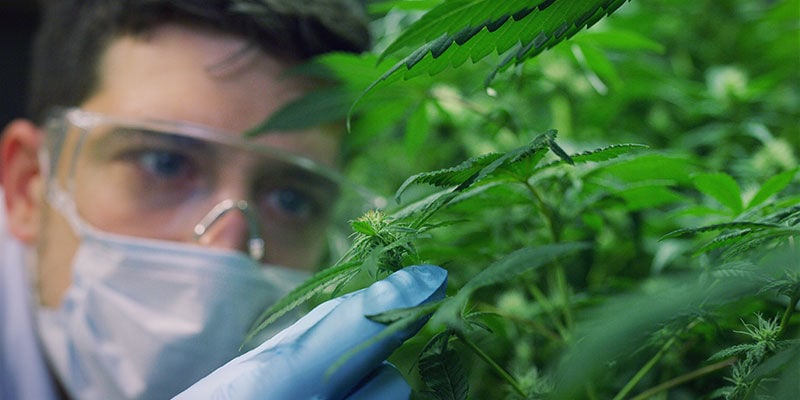
Fire is not the only risk in a grow space. Bodily injury is possible too. Chemicals, powerful lights, and a very busy room all present their own risks, and it is important to recognise and account for these.
Keep the Floor Dry
A dry floor is a happy floor. By keeping the floor dry, you prevent slipping and hurting yourself, and your crop. Less obvious, though, a wet floor in a warm, closed room is a perfect breeding ground for all sorts of things. Mould, bacteria, and parasites all thrive in those conditions. While some may just be irritating, others could cause serious ill health to you or your plants.
Use Indoor Gardening-Specific Sunglasses
High levels of UVC, UVA, and UVB light can cause damage to your eyes. Do not underestimate this. While the sun’s most damaging rays are filtered out by the Earth’s upper atmosphere, you have no such protection in a grow space. A simple pair of indoor gardening sunglasses could save you a whole lot of trouble. Make sure you get a specific pair designed for artificial growing lights. While it may be tempting to wear ordinary sunglasses, these will not filter out UVC light, and therefore will not offer you ample protection.
Wear Goggles, Gloves, and a Mask
Goggles, gloves, and a mask are essential. As you will be working in a very tight space with an array of potentially toxic chemicals, without adequate protection you will breathe these in, getting them in your eyes and all over your skin. Many plant fertilisers are corrosive before being diluted, as are pH levellers. Do not get complacent; one lungful of the wrong stuff, and smoking may never be a pleasure again!
Keep a Saline Solution (or Eye Bath) to Hand
In case something does go wrong, keep saline solution (purified water) and an eye bath within reach. If you get something in your eyes, don’t hesitate. Immediately flush it out with saline solution. Then, do it a few more times for good measure. Once this immediate precaution has been taken, identify the chemical and follow the instructions regarding medical assistance.
While a flush will do for many, some may require medical intervention.
Use Gloves When Handling Plants
You may love cannabis and think it can do no harm, by repeated exposure can irritate the skin. As such, wear gloves when you’re working with it.
Have a Fully Stocked First Aid Kit to Hand
An ample first aid kit could come in very useful. Whether you cut yourself trimming, burn yourself on a light, or bump your head in a tight space, it will be of use. Don’t assume one type of injury won’t occur. Get a fully stocked one and you’ll be in good stead.
Check Taps and Tanks Before Leaving
Never get lazy. Give everything a once-over every time you leave to make sure nothing terrible happens in your absence. Just think, are you sure you turned the taps off? Having a quick look is much more preferable to flooding or a house fire. Always double-check!
Make Sure Your Cannabis Grow Space Is Clean
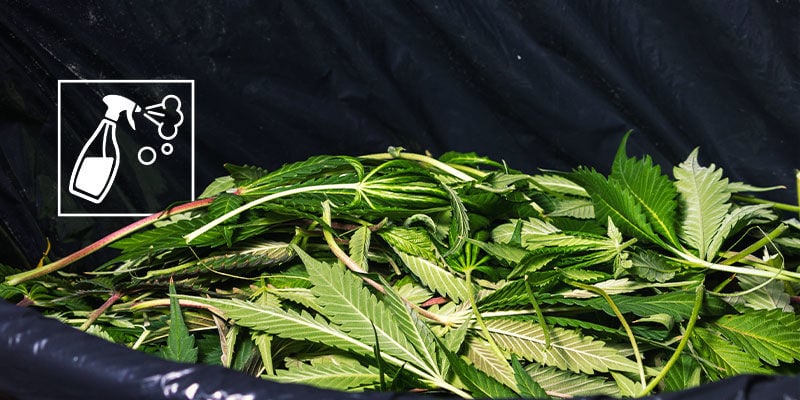
A dirty grow space is not a good option. Decaying plant matter, stagnant water, and dim spaces are the perfect homes for any number of unwanted pests. Be it fungus, spiders, or mites, a dirty space presents huge risks to your plants. If you’re serious about growing cannabis, you’re also serious about cleanliness. Cleaning between crops is not enough. Regular maintenance of the space is necessary throughout.
How To Clean Your Grow Room
Cleaning a grow room is a bit of work, but it is not difficult. The effort put in is greatly outweighed by the effort wasted if your crop is destroyed by some pest.
- Sterilise the Room Before You Start
Starting off with a clean space is paramount. If there are pests in there to begin with, you’re doomed from the start. Do yourself a favour and scrub that room till it shines. It’s worth going over every surface with something powerful like bleach until it feels like the most inhospitable environment on Earth!
- Daily Maintenance
Don’t get complacent after one good clean. Check every day. If you find little pools of water, mop them up. Dead leaves and plant matter are the perfect hosts for pests. Identify and remove them immediately. Give things a general wipe down once a day to make sure the space stays relatively clean.
- Deep Clean Periodically
Between grows, it’s worth going over everything properly. Clean everything out of the space and switch off the power; you don’t want things getting wet. If you have an extractor fan, consider leaving this on to remove noxious fumes. Take out all portable equipment (pots, etc.) and give these a thorough soaking and a once-over with bleach.
Likewise, scour every surface in the space. Every nook and cranny, every seam in the tent. Give each a serious deep clean until everything looks brand new and smells poisonous. Just make sure all the cleaning products have evaporated before introducing a new crop, and wear appropriate protective gear when cleaning.
- Cleaning After an Infestation
If you are unlucky enough to have an infestation, and this does happen from time to time, no matter how careful you are, you must give everything the deepest clean you’ve ever known. Once certain things have taken hold, they can be incredibly resilient. It goes without saying that all organic matter (soil, coco, etc.) goes.
For the rest—the tent, lights, ventilation system, pots, etc.—just clean it and clean it again. Get right into the little cracks and crevices, as these are the perfect spaces for spores to cling to until your next grow. Bleach or hydrogen peroxide should suffice for removing pests. After cleaning, ventilate the room well.
Tips for Keeping a Clean Cannabis Grow Space
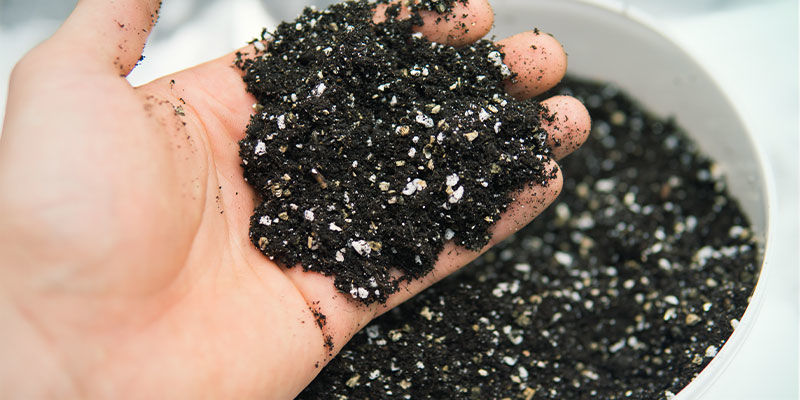
Below are some simple tips for maintaining a clean growing space from seed to harvest. While it is very important to begin a grow with a clean space, it is equally important to maintain cleanliness from start to finish. Once a pest is in, it can be a nightmare to get rid of.
Make Sure You Are Clean
You can go to as much effort as you want keeping the space tidy, but if you bring in pests from the dirty outside, it will all be for nothing. If possible, have a clean and dedicated set of clothing you can change into when entering your grow space. Likewise, cover your hair and wear a sterile pair of gloves when handling anything.
Use Clean Equipment
Always clean your equipment before use. If you start trimming a plant with a dirty pair of shears, you could be doing more damage than good. Likewise, even if your pots are fresh out of the box, give them a once over with diluted bleach just to be sure they’re as clean as can be.
Properly Organised Growing Containers
Organising your pots well will help in the long run. Not only does better utilisation of space increase the efficiency of your lighting, but well-ordered plants make for a cleaner, more organised environment. Keeping a tray beneath your pots allows for drainage and cleanliness, too.
No Pooled Water
Do not allow water to pool. This is a perfect breeding ground for pathogens, especially in a warm environment.
Prune Plants on a Regular Basis
Pruning plants on a regular basis has a twofold benefit. The removal of dead matter makes infestation less likely, and proper pruning reduces competition and therefore stretching.
Keep Soil in Check
A tough top layer of soil may signify a poor nutrient balance. Check your soil every few days for a tough outer layer. This will stop adequate aeration, which will affect the health of the soil and the plant. This is the environment in which the most delicate part of your plant (the root system) lives, so keep it clean and healthy!
Keep Floor Clean and Dry
Sweep and mop regularly. Whether to avoid tripping, infestation, or a fire, a quick brush will save you a lot of heartbreak further down the line—and it will make your grow look more professional.
Clean Pipes and Ventilation
Clean the systems regularly. Blocked pipes and pumps will stop sufficient water from getting to your plants, and could make a great breeding ground for pests. Likewise, dust can gather in your ventilation system and block it up. Regularly checking and cleaning the components of your grow is paramount to a safe, successful harvest.
How To Make Your Cannabis Grow space As Green as Possible
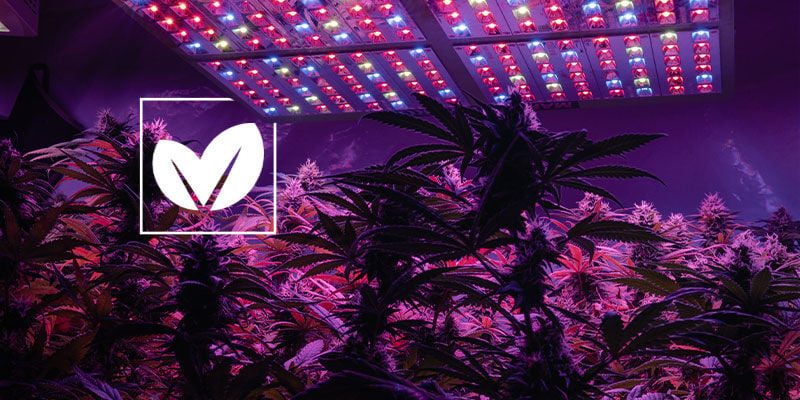
These days, we’ve all got to do our bit to protect the environment. Growing cannabis is a power and resource-hungry endeavour, but there are things we can do to make the process more green.
Use LED Lights
LED lights use significantly less power than alternatives. Therefore, if you want to lower the carbon footprint of your grow, these are the way to go. It will help you too; reduced power usage means they will be cheaper to run, and the lower heat emission means you’ll have a safer and subtler grow.
Consider Using CHP (Combined Heat and Power)
Combined heat and power technology captures the heat emitted by the elements of your grow and uses it to do things such as heat water. While it can be expensive to set up, after a few years it will pay you back through power saved, and the rest is free money.
Use AI and Automation
An automated AI system can fine-tune everything from lighting to humidity. By doing this, it means only the necessary amount of power is used, and not a watt more. Not only does this benefit the environment, but by managing your grow space on a granular level, your plants will get the very best growing environment, leading to better, bigger yields.
Take Advantage of Natural Light
Where possible, harnessing natural light will save money and the environment. If you can switch off your lights and get a good dose of real sunlight to your plants during daylight hours, both your weed and the planet will benefit.
Use Clean Energy
Using a renewable energy system will be much greener. If you can, it may be worth installing this on your property, and over time the power will become free. If not, there is a growing number of energy providers who provide energy from renewable sources, and they’re often cheaper. Whether growing cannabis or not, switching to green energy is a good move.
Take Advantage of the Seasons
Use the seasons to your advantage. In winter and autumn, don’t use a power-hungry air-conditioning system to cool your grow space. Simply pump fresh, cool air in from outside. It’s worth noting that if you plan to do this, it may be worth investing in a filter, lest you bring in unwanted pests.
Optimise Airflow
By properly optimising airflow in your grow, you will make it much more efficient. It will keep it cooler, prevent CO₂ depletion, and regulate humidity. All of this means that the other equipment has to work less hard, thereby using less power.
Save and Recycle Water
Make the most of the water already available to you. If you have somewhere to store a water butt, do that and use rainwater as much as possible.
By using desalination and reverse osmosis, you can reuse the water from your grow. The water that seeps through into your under-tray isn’t wasted water. Managed properly, water use in your grow can be very efficient.
Use Soil, Coco, or Hemp Fibre
Rockwool, peat, and clay are not, despite being organic substances, environmentally friendly. Hard to reuse and energy-intensive to create, there are greener alternatives that do the job just as well, if not better.
Consider using hemp fibre or coco coir instead. Not only can these be reused, but, if discarded, they will biodegrade cleanly, leaving nothing damaging in their wake. Besides, doesn’t growing weed in a weed substrate sound good?
Dispose of Waste Properly
When trimming and topping, think about the waste. Don’t just throw it in the bin. Where possible, put all organic waste in a compost bin so it can go back into the ground and feed something else one day.
With other waste, such as plastics, check to see if they’re recyclable. If they are, go to the effort of recycling. You’ll feel much better about it when you smoke your first spliff.
Grow Organically
Making or buying organic fertilisers and pesticides limits the environmental impact of your grow. As these get flushed and run into sewerage systems and the wider world, the planet will thank you for using environmentally friendly alternatives.
Ready To Achieve a Great Harvest?
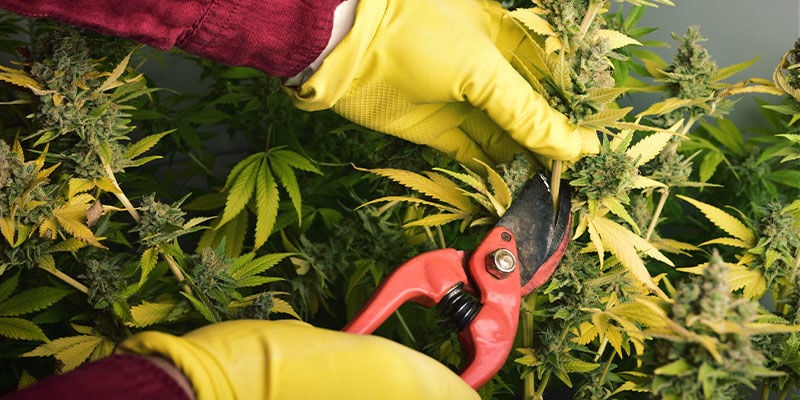
If anybody ever said growing weed was easy, they were lying. While some resilient plants will grow with little to no care, achieving worthwhile results requires a lot of effort. But don’t be put off; every bead of sweat you shed throughout the growing process will make those first tokes taste even better. The satisfaction that comes from a successful grow is hard to beat!
Following the above guidance will put you in great stead for a bumper harvest. By using the space available to you, you can make even a tiny cupboard produce a load of bud. But, whatever you do, make sure you do it safely, because if anything goes wrong, all that effort could be wasted, and you could find yourself in a much worse position than before you started.
More than anything else, though, have fun. The growing process can be a joy from start to finish (with perhaps a few frustrating periods in between).
You might also like





 United States
United States

